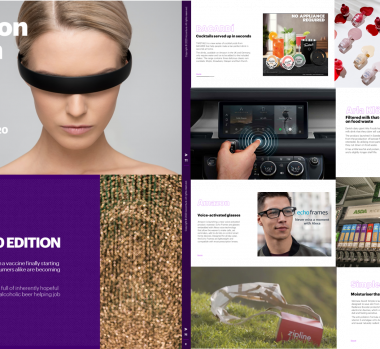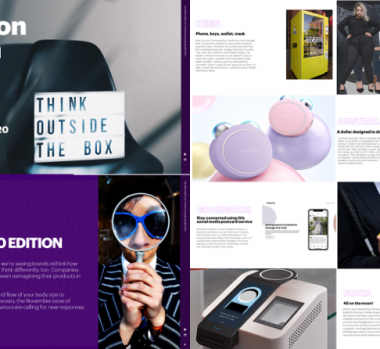The Greatest Power Move? Vulnerability
It’s unlikely to be a coincidence, but the backdrop in which leaders are operating has changed dramatically. Today, the average life span of companies on the S&P 500 index is under 20 years, down from 60 years in the 1950s (according to a recent report by Credit Suisse).
Seeing big businesses collapse, routinely miss opportunities, or simply call things far too late could be driving leaders to turn inwards and ask themselves more fundamental, existential questions about who they are and why they exist, causing a different type of leader to emerge.
As innovators, we both ask and answer the ?What If! questions that help organizations imagine new growth futures, which often requires leadership teams to admit that their existing business model might be running out of steam. Voicing this aloud, formulating it into a problem statement and seeking help from outside the organisation can be a big leap. In asking What If, leaders become vulnerable, creating an opportunity to drive improvement through experimentation. This gives them and their organisation power.
Why is being vulnerable so important and relevant now?
This ever-increasing pace of change exposes leaders to more moments of questioning and personal reflection, more often. However, this requires the type of ‘right-brain’ skills that 65% of C-Suite executives say are their weakest (Accenture).
Instead of getting spooked by the ‘What If’ questions, leaders need to close this capability gap and embrace vulnerability.
Here’s what it could do for you and your organization:
It drives permeability.
It’s not just okay for answers to come from outside of the building – it’s essential! Being permeable opens up organizations to what’s possible. This in turn fuels diversity and collaboration, and both are bedfellows to breakthrough innovation and growth. In a recent survey of 4,100 people, published by HBR, six traits were found to be the distinguishing features or behaviours of inclusive leaders. These three in particular speak to ‘being vulnerable’.
- Humility: They are modest about capabilities, admit mistakes, and create the space for others to contribute.
- Awareness of bias: They show awareness of personal blind spots as well as flaws in the system and work hard to ensure meritocracy.
- Curiosity about others: They demonstrate an open mindset and deep curiosity about others, listen without judgment, and seek with empathy to understand those around.
It minimises your blind spot.
A vulnerable leader requires an enhanced perception of the people around them, both in terms of their views and feedback and the trust you have between each other. Being self-aware drives a ‘learner mindset’, where learning fast and finding out how things work in the market with customers is valued more than historical models or business rules (based on the Johari Window Model). This then can replace more typical ‘knower mindset’ issues like proving and reporting vanity metrics to falsely indicate progress.
It gets rid of ego.
Vulnerability is freeing, it encourages individuals, teams and whole companies to let go of the need to be right and the pressure to be the smartest person in the room. For businesses that hold their brand and reputation too tight, this can be a big hurdle to overcome. The ones that do it well have addressed how they foster change, embedding structures such as psychological safety, defined by Google’s Project Aristotle as “a culture where managers provide air cover and create safe zones so employees can let down their guard.” It’s in the creation of these sandbox environments, that risk and learning can be embraced as part of growth, rather than as mistakes or failures that cause us to revert back to the ‘now’ ways of doing things.
As partners in helping organizations imagine new growth futures, we embrace vulnerability and encourage businesses to create a safe space to ask the big questions and de-risk the possibilities. Our experience as practitioners of innovation has shown us that particularly in these existential moments where the outcome is important and uncertain, we can use experimentation to guide the right strategic questions, build organizational momentum and incubate a new future of growth.
Next time we look at Ambidexterous Leadership, the new style of leadership required to be successful in answering the growth questions routinely asked of big business.
References
https://hbr.org/2019/03/why-inclusive-leaders-are-good-for-organizations-and-how-to-become-one
https://www.inc.com/michael-schneider/google-thought-they-knew-how-to-create-the-perfect.html
https://hbr.org/2010/06/howard-schultz-on-starbucks-tu
https://rework.withgoogle.com/blog/five-keys-to-a-successful-google-team/
https://www.communicationtheory.org/the-johari-window-model/
https://www.accenture.com/us-en/insights/strategy/whole-brain-leadership-for-c-suites
Get in touch


